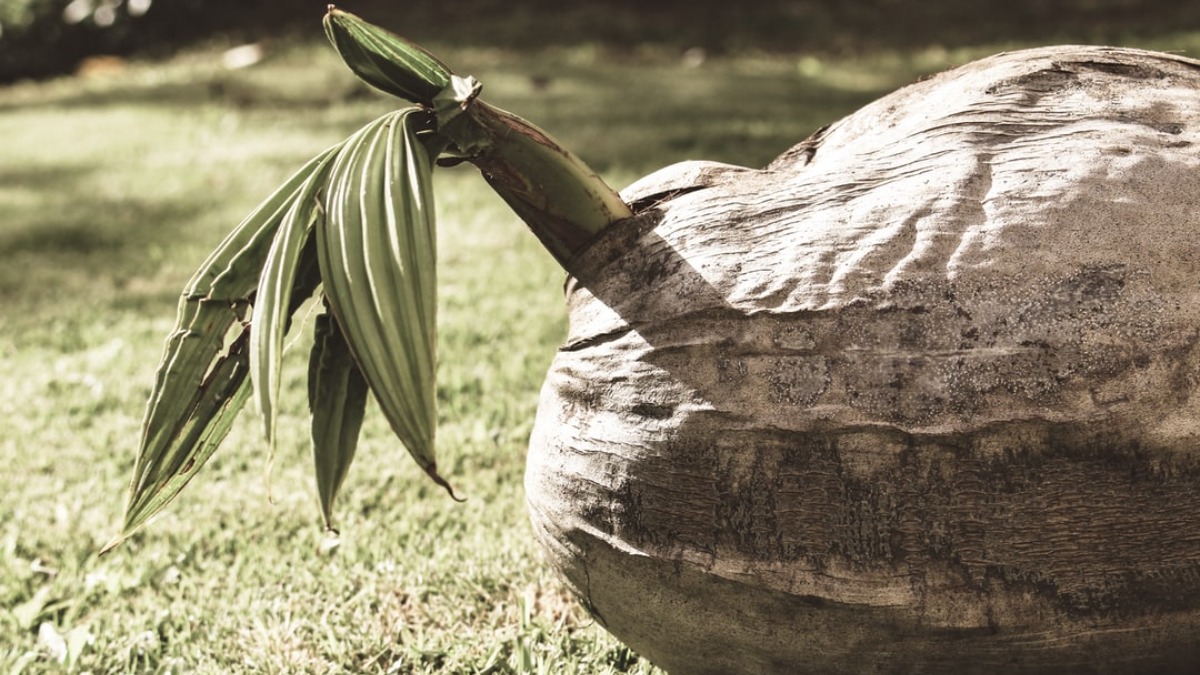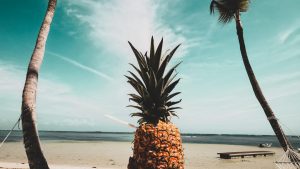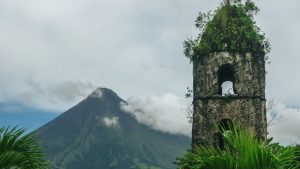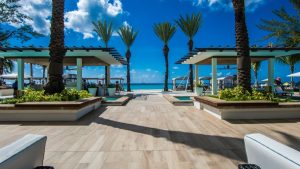Before you read the rest of this post about Caribbean coconuts, I’d like to ask you to do me a favor.
1. Get comfortable in a position that is suitable for you.
2. Close your eyes and relax.
3. Allow yourself to become quite comfy and sleepy, almost to the point of nodding off.
4. Imagine you’re on a beautiful tropical beach.
5. Take some time to imagine that picture in your head.
6. Once you’ve committed the image to memory, look around.
So, now that you’ve seen what I saw, tell me about it. Did you notice coconut palm trees in your photograph? Did you detect the aroma of coconut oil?
Given the choice, would you rather spend your vacation on a beach in a postcard-perfect location, or at one of these Caribbean locations that are awe-inspiring? The answer is easy: I’m guessing you picked the latter, powder white sand, blue-green water shimmering in the sun, and those renowned coconut palm trees along the beaches. Coconut palms are familiar sights on most islands in the region, yet few realize they have been introduced. They simply assume that coconut palms have always been there because they appear to be such a natural element of the landscape.
But guess what!
They are not native to the Caribbean and have been there for fewer than 500 years! During the first half of the 1500s, Spaniards and other European colonizers introduced them to the region. On the other hand, Christopher Columbus and his crew were never aware of coconut on any of their four trips to the New World. These occurred between 1492 and 1504. When they first arrived, coconuts did not exist. They arrived after me.
Perhaps you’re wondering why I’m making such a big deal about it. You might be saying something like, But… I believed coconuts could resist the erosion of seawater and were buoyant enough to float for thousands of miles. Isn’t it true that the majority of Afro-Caribbeans came from somewhere else before settling in their current location? Yes, didn’t you think they came from somewhere else? I’m sure that this is what most people believe. In fact, some historians thought so. However, the facts suggest otherwise – and without a doubt.
Coconut is not mentioned in any of the earliest Spanish accounts or other colonizing European nations’ exploration of the Caribbean throughout the late 1400s and early 1500s. Furthermore, the Taino and Carib had no words for coconut; these were the indigenous people of the Caribbean Islands, and if anyone knew whether they were there, they would have known. Because coconuts did not exist prior to the Spanish arrival, a native term for coconut does not exist. The notion that coconut was inspired by the Spanish word for monkey is based on the fact that they thought it resembled a monkey face with two eyes and an open mouth.
The Spanish DID find coconuts on the WEST coast of Central America, but in fact, it was a long time ago. The history books and other historical accounts previously stated that coconuts had spread from the west coast of Central America into the Caribbean. However, genetic proof conclusively demonstrates that this is categorically incorrect!
When you analyze all of the coconuts in the world, the group into two distinct and unconnected genetic clusters. They are all members of the same species, although they belong to two distinct subgroups.
The Pacific Indonesian region is the source of one group of coconuts. The Indian Ocean is where the other group of coconuts was developed. In Madagascar, the two groups seem to have mixed only. It’s been clearly shown that the coconuts found on the WEST side of Central America are from the Pacific Indonesian group, and those in the Caribbean are from India. As a result, the coconuts of the Caribbean did not originate on the west coast of Central America.
It appears that coconuts from India were first taken by people or currents to the east coast of Africa’s historical detectives. They were carried to the west coast of Africa and later taken to the New World by European colonizers and/or missionaries.
I’m curious to hear what you think about this. I’ve never seen these before, and they’re really interesting. As a fascinating side note, it’s been postulated that coconuts came from the west coast of Central America via the seafaring Polynesians more than 1000 years before Christopher Columbus discovered the New World. That is something to think about! Never accept the gospel as presented in a history textbook. It’s highly probable that Columbus was not the first non-native to arrive in North America.
Okay, on to the coconut’s Caribbean saga. Once the Europeans discovered it, they recognized that this would be a simple way of transporting sterile water (coconut water) and nutrients across saltwater where freshwater might be scarce or end up contaminated.
The coconut palm has been cultivated in the Caribbean since at least the middle 1500s, according to written descriptions. They were planted around the edges of the sugar plantations to provide water and food for those who worked on them. It wasn’t until a few centuries after that, when coconuts were exploited on a commercial basis as a cash crop, that they became widespread.
Now, I’m not sure where this is going but bear with me because I’d want to tell you about shipwrecks before I go on to talk about Caribbean coconuts.
There were several shipwrecks in the 1500s, including one that was particularly notable. During a terrible hurricane, an entire fleet of Spanish ships loaded with gold tried to pass through the Mona Passage between the Dominican Republic and Puerto Rico, but they sank when they came into contact with rough seas. In fact, the Mona Passage is known for shipwrecks since it was difficult to navigate in challenging seas even when the weather was ideal. The Mona Passage can still be tough to get through with today’s technology. Cocos Islands are also known as the “Isles of Adventure,” and they have been a popular place for scuba divers to visit. Many men have perished while many ships have run aground here. So, why am I discussing shipwrecks when I should be talking about coconuts?
However, it turns out that coconuts travel across the Caribbean very swiftly owing to shipping. For example, when there were shipwrecks, thousands of coconuts would be thrown overboard in a new area for coconuts. Some of these coconuts must have naturally rooted after they washed up on the beach. It turned out, however, that it was quite frequent for inhabitants of the Caribbean to intentionally pillage the sea’s gifts and plant them. In this manner, almost all of the coconuts would survive to produce another coconut tree. In fact, this is exactly what occurred in West Palm Beach, Florida, how it acquired its name. A ship ran aground offshore and discharged a few thousand coconuts that were planted by the locals as they arrived onshore.
Punta Cana
Punta Cana is the most popular holiday location in the Dominican Republic, located on the east coast. In fact, not just the original little town of Punta Cana, but also the entire 39 miles of eastern coastline are known as Punta Cana or the Punta Cana Coast. The name “Coconut Coast” was created by early investors in the area, who dubbed it “The Coconut Coast.” This was owing to the extremely lush and mature coconut palm forest that extends along the coast and actually goes quite far into the interior. The phrase “The Coconut Coast” is still used from time to time. I have no direct evidence, but I can’t help but believe that the coconut palm trees lining the Punta Cana coastline and attracting tourists may be descendants of coconuts lost in a shipwreck long ago. There may be a coconut palm tree grove there that has been there since the 1500s. You are, in fact, seeing a historical monument to a shipwreck when you look at those coconut palms!
Remember that you are not looking at a Caribbean plant if you see a coconut palm tree on your next visit to the Dominican Republic or elsewhere in the Caribbean. Close your eyes and try to visualize the Caribbean landscape without any coconut palms. It’s more difficult than you may imagine! We are so used to associating coconuts with the Caribbean that we find it hard to picture them absent. Perhaps it’s a lesson to always examine things, no matter how certain we are in our beliefs.



